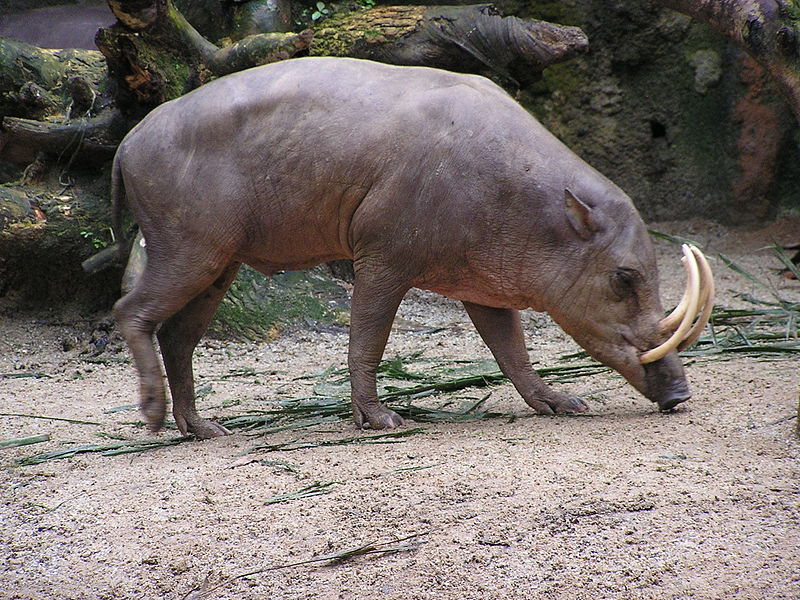Overview
The brilliantly colored lories and lorikeets are quite definitely parrots, and yet they depart radically from typical parrot behavior and breeding biology, and in their internal anatomy. As you will see, a good deal of this may be explained by the nature of their diets.
Physical Description
The 56 species of lories and lorikeets are among the most flamboyantly colored of the parrots, which is quite an accomplishment given the group’s generally brilliant coloration. All are small to moderately sized, with sleek, glossy plumage. Wilhelmina’s Lorikeet, is, at 5 inches in length, the smallest, while the 12 inch long yellow-streaked lory is the largest (several species have tails that add a few inches to this figure, but these have quite small bodies). They are gregarious and noisy, and are a conspicuous part of the environments that they inhabit.
Range and Habitat
Indonesia, New Guinea (where the greatest number of species occur), Australia and a number of neighboring islands in the South Pacific. Various species inhabit lowland and mountainous rainforests, plantations, farms, open woodlands, suburbs and parks within large cities.
Status in the Wild
Some, such as the rainbow lorikeet, are quite widespread (so much so that 22 separate races have been identified) and are thriving due to supplementary feeding by people. Others, such as Stephen’s Lory and a number of species in the genus Vini, are among the world’s rarest birds. Threats include habitat loss, introduced predators such as black and Norway rats, and introduced strains of avian malaria.
Diet
In a region rich in parrots, the lories and lorikeets have evolved so as to exploit a food source – nectar and pollen from flowering trees and bushes – that is not used by competing species. This is a key to their success as a group and explains some of their unusual adaptations and behaviors. Most also take varying amounts of seeds, insects and fruit, but all rely primarily upon pollen and nectar.
Their bills are longer and more slender than those of other parrots, and are not nearly as powerful. The digestive system differs greatly also, in order to process their unique diet. The gizzard, a muscular organ used by other parrots to grind seeds and nuts, is thin- walled and weak.
The tongue is extraordinarily long and thin, and is tipped by feathery projections known as papillae. The papillae remain protected by a sheath when not in use, and expand outward to help the birds lap nectar and pollen. These structures are also utilized by nectar feeding bats, hummingbirds and other species that forage in flowers.
Most of the trees from which lories and lorikeets feed do not have specific flowering seasons, and individual trees of the same species usually grow far from others of their kind (unlike in temperate habitats, where dense stands of the same trees often occur in one place, and where all flower at the same time). Hence, lories are quite nomadic, often flying 50 miles or more between feeding sites.
Lories and lorikeets possess a far greater range of threat displays than do other parrots, with over 30 distinct movements (flying, walking, bobbing, etc.) having been observed in the rainbow lorikeet. Tropical flowering trees attract a great many birds, mammals and insects, and it is presumed that the resulting competition has led to the development of these gestures. In order to compete for such a limited food source, lories and lorikeets are also extremely pugnacious when feeding – in Queensland Australia and elsewhere huge numbers of these birds flock to public feeding sites for the benefit of tourists. They show no fear of people, clambering about anyone present in search of food.
Reproduction
All species studied thus far form life-long pair bonds. Their breeding strategies vary greatly from those of other parrots, which usually breed during distinct periods each year. As a consequence of the unreliability of their staple food, most lories and lorikeets come into breeding condition whenever a large number of trees flower within a fairly small area, regardless of the season.
Interesting information on the natural history of the rainbow lorikeet in Australia is posted at:
http://www.australianwildlife.com.au/rainbow.htm
 “Most colorful” is a tough title to clench in the parrot world. The Ornate Lorikeet, Trichoglossus ornatus, however, must surely be a top contender. In fact, the name “ornate” does it little justice, as would any description of its plumage. No longer commonly kept in the USA, this is a bird worth searching for in zoos or among large private collections.
“Most colorful” is a tough title to clench in the parrot world. The Ornate Lorikeet, Trichoglossus ornatus, however, must surely be a top contender. In fact, the name “ornate” does it little justice, as would any description of its plumage. No longer commonly kept in the USA, this is a bird worth searching for in zoos or among large private collections. I recall caring for Ornate Lorikeets when working for a bird importer as a teenager, but they are not at all common in the USA today. They have a reputation for being quite delicate as regards temperature, and even long term captive seem prone to respiratory and digestive system distress. When in the peak of good health, their voices are as loud, and far harsher, than are their colors!
I recall caring for Ornate Lorikeets when working for a bird importer as a teenager, but they are not at all common in the USA today. They have a reputation for being quite delicate as regards temperature, and even long term captive seem prone to respiratory and digestive system distress. When in the peak of good health, their voices are as loud, and far harsher, than are their colors! That Bird Blog – Bird Care and History for Pet Birds
That Bird Blog – Bird Care and History for Pet Birds
